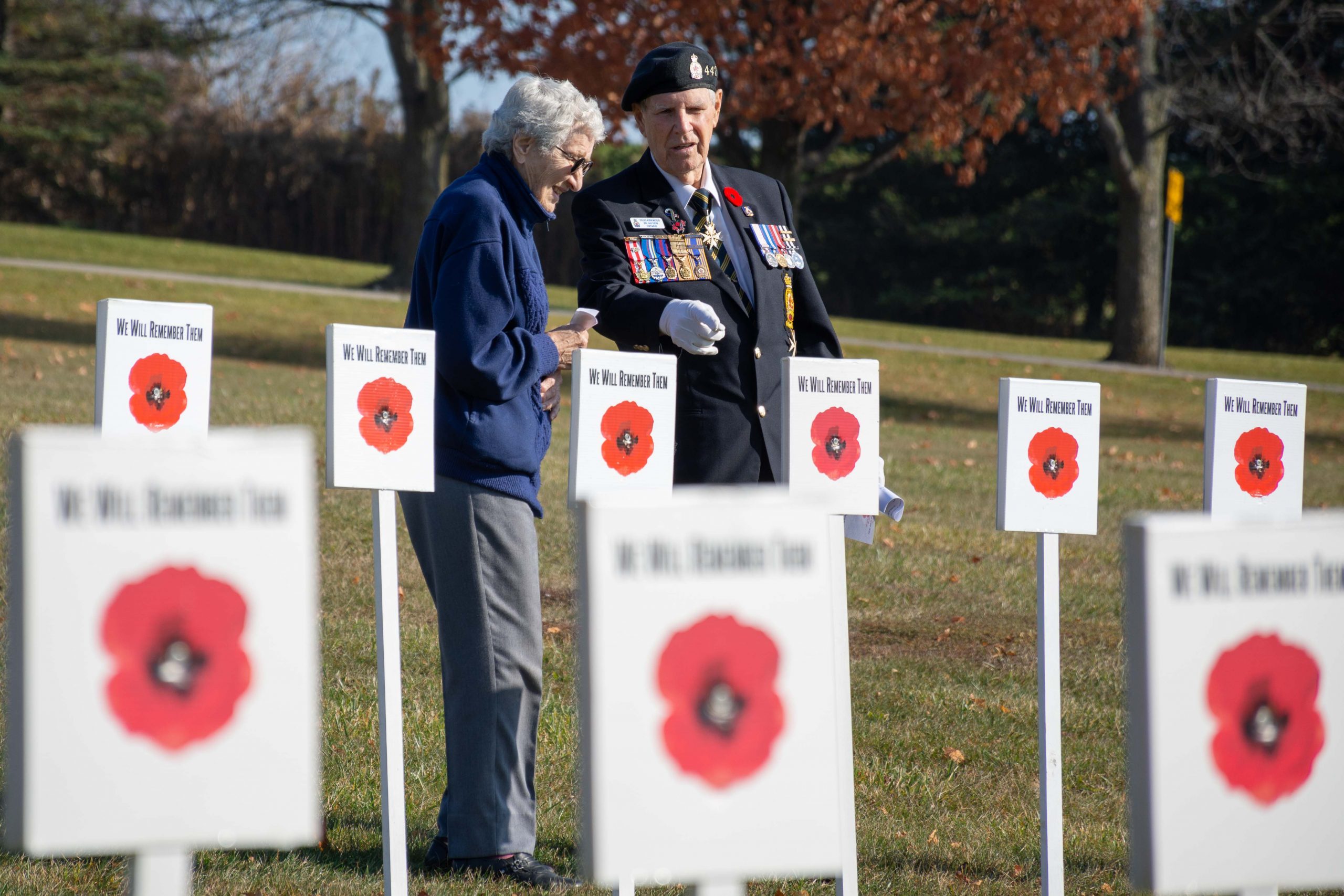ABOYNE – One by one, the names of Wellington County’s war dead were read aloud on Nov. 3, as a heavy grey fog, burned off by the sun, revealed 500 markers on the hill beyond, bearing the names of local residents who died in service to their country.
Veterans, Legion members, county staff, and local dignitaries were gathered, listening in quiet reflection during the yearly ceremony held at the front steps of the Wellington County Museum and Archives.
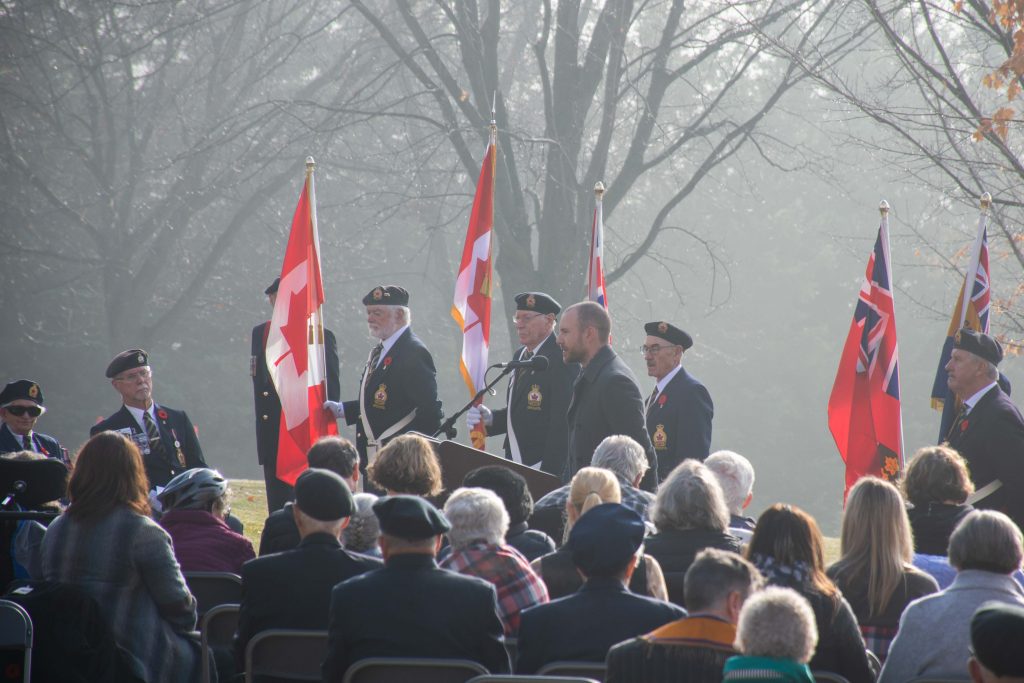
Wellington County Museum and Archives activity programmer Kyle Smith introduces local Legion members at a Remembrance Day ceremony held at the museum on Nov. 3, in advance of Nov. 11. Photo by Jordan Snobelen
“Today, it is an honour to join all of you in remembering and honouring those soldiers who fought, those who died, and those who supported the war cause back home. Their sacrifice was not in vein,” Wellington County Warden Kelly Linton said in his opening remarks.
After the final names were read by members of Legion branches from across the county, Uwe Claussen played the Last Post, and Harrison Little played Flowers of Forest on the bagpipes.
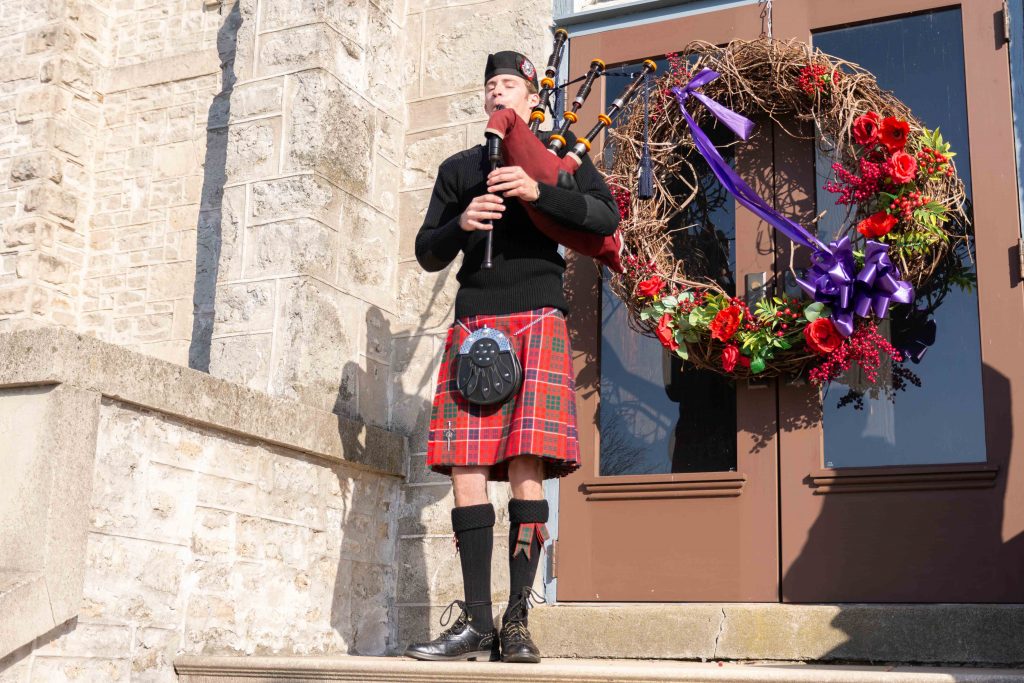
Harrison Little plays Flowers of the Forest, a lament, on the bagpipes at the Wellington County Museum and Archives on Nov. 3. Photo by Jordan Snobelen
Some of those in attendance made their way along the rows of markers following the ceremony, contemplating the names and ages of the dead—many who had only entered adulthood when they took their final breath.
“Five-hundred people are just gone from the community,” Joyce Brown remarked as she stood at the base of the hill, gazing upward at all the markers.
“Generations gone,” added Terri Fitzpatrick. “Each one of these people has a story.”
Brown, a Fergus resident, has been to war memorials and grave sites in Normandy and Belgium, but this was her first year attending the county’s ceremony, along with Fitzpatrick, John and Nancy Merrick, and Dave Brown.
“This reminded me of the war memorials, the commonwealth cemeteries, because it’s very much set up like this, except the graves are permanent,” Joyce said.
Joyce’s grandfather, Alvin Fitzpatrick, served in the First World War, fighting and suffering a wound at the Battle of Vimy Ridge.
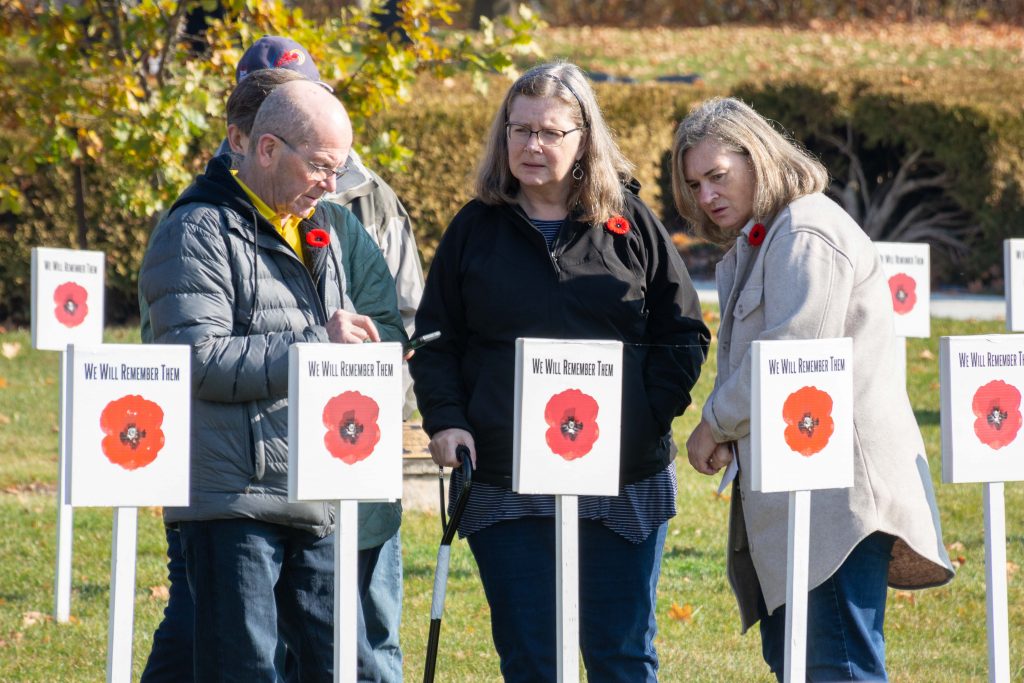
John and Nancy Merrick, left and centre, and Terri Fitzpatrick inspect one of the markers bearing the names of Wellington County’s war dead at the Wellington County Museum and Archives on Nov. 3. Photo by Jordan Snobelen
“He always rubbed his left arm; we always wondered and he would never talk about it,” Joyce said.
“My grandpa too, my grandpa was at Vimy Ridge as well,” said Dave, explaining his grandfather was shot in the throat and lived, only suffering a raspy voice. “Never talked about it.”
Eventually the stories were passed down by family members, or gleaned from military service records.
Their grandparents’ names aren’t memorialized on any of the county’s markers—both survived the war and returned home.
But their stories serve as reminders of how close death came for many and of the physical and mental scars of war.
“Aren’t we lucky that we get to talk about it?” Fitzpatrick said.
“You have to remember what people sacrificed.”
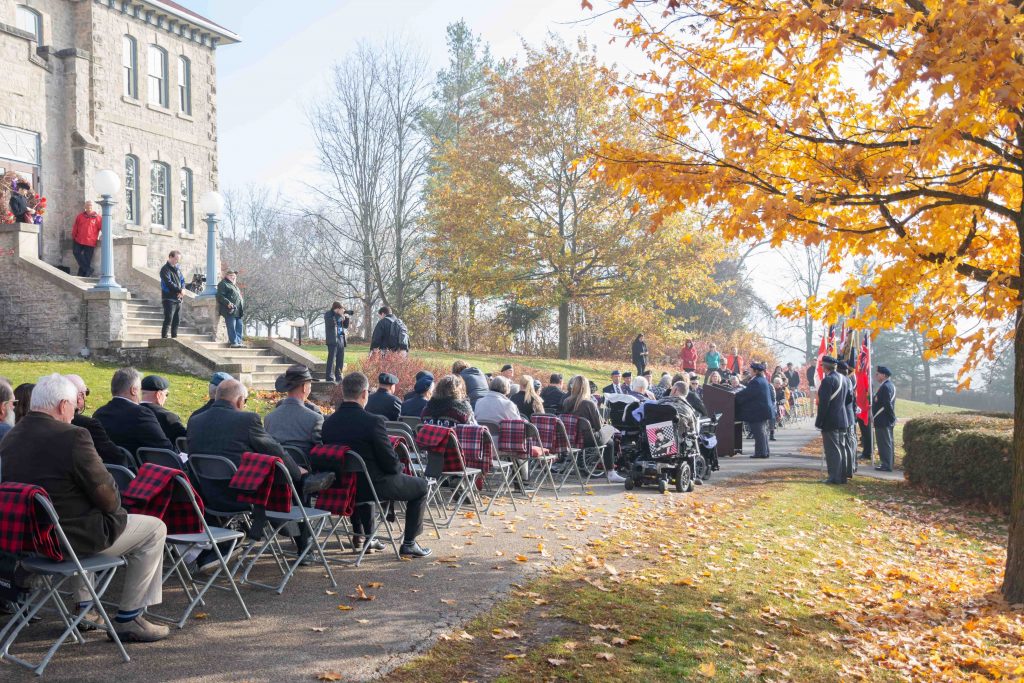
Veterans, Legion members, county staff, and local dignitaries are seen gathered together on Nov. 3 during a Remembrance Day ceremony held in advance of Nov. 11 at the front steps of the Wellington County Museum and Archives. Photo by Jordan Snobelen
Nearby, Doug Kirkwood, an Erin Legion Branch 442 member of 66 years, pointed out the names of past Erin residents who served to Aletha Kirkwood.
Doug served with the Lorne Scots Regiment in the post-war years, during the 1950s and ’60s, and was Honour Guard when the Erin cenotaph opened in 1950.
Over the years, he has learned as much as he can about past Erin veterans from newspaper clippings and archives or talking to living relatives.
He’s able to point out names and rhyme off details about where each soldier fought and how they died – save for a few he calls “puzzles.”
They are without known ages, dates of death, or gravesites.
But here at least, they have a place where those, like Doug, can walk the rows and remember them.




